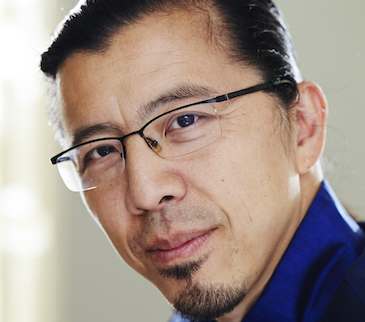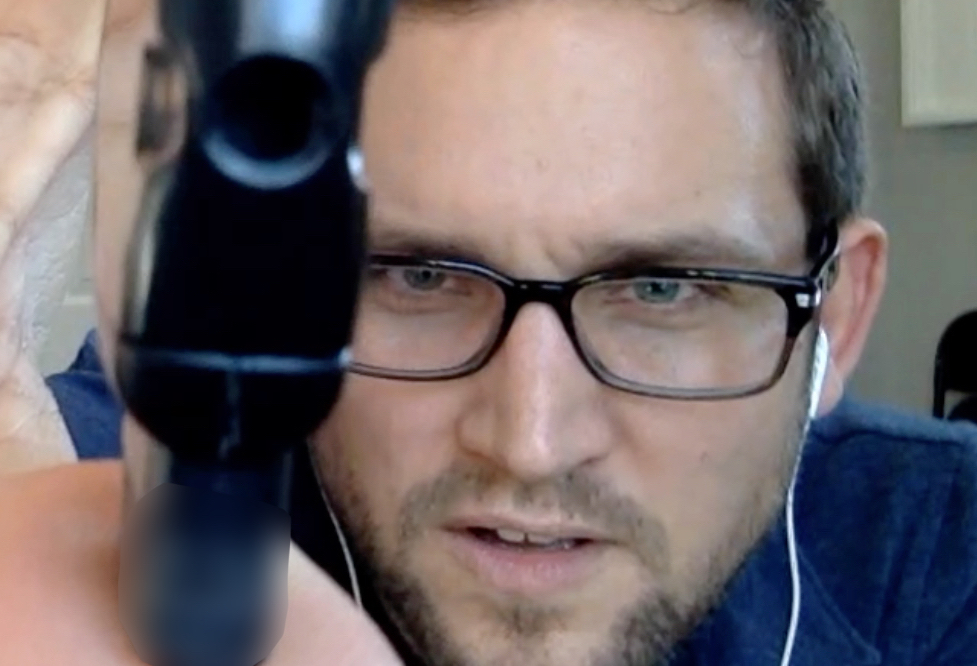Taking a break from practicing can be a healthy thing to do for many reasons, but getting back into great shape can sometimes be discouraging and painful. When we someday emerge from this quarantined lifestyle and make our way back to the stage as musicians, I’m sure many of us will be faced with the question of how to get our musical and instrumental skills polished quickly and effectively. It usually takes me at least two weeks to recover from a break in practicing and I’ve found that breaking up my practicing into fundamental components helps me quicken the process.
Embouchure.
My embouchure muscles atrophy faster than everything else because playing the clarinet involves a bizarre set of muscles not used in your everyday life. Thus, I begin there. I use the “Wind-o” (https://www.thewind-o.com/), a device to strengthen the corners of my embouchure and work on breath support at the same time. This device activates the correct embouchure muscles and discourages me from biting.
Breathing.
Then I do some breathing exercises with a breath builder. The breath builder similarly helps activate the muscles I should be using when I breathe properly and it encourages me to use my air support. Following with a long tone exercise, either stepwise or intervallic, really works those tiny muscles and allows me to start listening for a beautiful tone again. These long tones should be done at a fairly full dynamic at first to ensure proper air support and resonance.
Fingers.
After my embouchure and air support I focus on my fingers. I use technical exercises that I rotate from day-to-day including the Baermann Book 3 scales and arpeggios, Klose, and Paul Jeanjean’s Vade-Mecum studies. I like to use familiar studies and I go slowly enough to focus on my hand position, finger movement, and relaxation.
Articulation.
The next fundamental I tackle is articulation, for which I developed a series of exercises that take forever but really help me focus on the fundamental movement of the tongue. I must minimize the effort involved in stopping the reed, the distance the tongue travels from the reed, and relearn that rapid articulation needs a combination of air support and relaxation. The body wants to be tense when you play fast, so I must train my body to do the opposite. I start with an exercise where all I’m doing is touching the reed, speeding it up and slowing it down, but always with a sense of relaxation. Then I move into patterns where I’m changing notes.
Ear-training.
After fingers and articulation, I move on to ear-training. Re-acclimating my ear to the pitch center of 440 or 441 can be humbling and frustrating, but it is essential for playing in the orchestra. If I don’t check in with a tuner on a regular basis, I begin hearing “clarinet pitch” (where the notes feel good on the clarinet, but are not necessarily in tune). I use a drone, or tuner application, or play along with Smartmusic, a web-based application with a library of piano accompaniments. Intonation problems can often be a sign of a technical issue, which is another reason to check the tuner. If you’re playing sharp on the clarinet it’s usually because you’ve started to bite. If you find yourself flat, that can be a voicing issue where you’re not spinning your air properly. Using a tuner while doing articulation exercises can be a diagnostic tool for the tongue. If your pitch drops when you start to articulate, for example, it’s often because the back of your tongue is dropping during the articulation movement.
Reeds.
One of the most difficult parts of getting back into shape is that I have no frame of reference for which reeds are good and which ones are bad. I typically will rotate through my reed case as I do my warm up exercises, and I will naturally gravitate to one or two reeds that will feel the best and will be used for my remaining practice time that day. Every Day, each reed changes a bit, so I don’t throw anything away until I’ve played it several days in a row with no luck and I am unable to make any adjustments to improve it. However, after a lapse in playing, everything either feels just “hard” or “soft”. If I’m not thinking about it, I tend to play on reeds that sound good in a small room but lack response. I have to really force myself to push the reeds to see what they can do (extreme registers and dynamics, variety of articulations, clear and ON TIME attacks, etc). Demanding more from the reeds (after ensuring my embouchure and air are correct) helps me weed out the real “junk” more easily.
Take it slow.
For me, it’s important to return to practicing relatively slowly. I take breaks every 30 minutes or so and once my fundamental practice is over, I like to spend some time playing simple melodies from the Rose Studies or from the Folk Songs for Solo Singers (Volume 2), which is available on smartmusic.com. People in my house like hearing the pretty melodies, and it keeps me honest with my sound and my pitch.
No matter what you do to get back in shape, be patient and kind with yourself, focus on good fundamentals, and don’t do too much too soon. Work for relaxation and ease, and always end every practice session making music!
Happy practicing, and see you on the stage soon!

Ralph Skiano
Ralph Skiano is the principal clarinetist of the Detroit Symphony Orchestra. He served in the same position in the Richmond Symphony and the Des Moines Metro Opera. He has also appeared as guest principal clarinetist of the Seattle Symphony, the Cincinnati Symphony, and the Cleveland Orchestra.
Ralph has been involved in numerous music festivals, including the Mainly Mozart Festival, The Peninsula Music Festival, the Britt Music Festival, Festival Lyrique-en-Mer, and the Tanglewood Music Center. Ralph appeared as a soloist several times with the Richmond Symphony, most notably performing Concerti by Mozart, Weber, and Copland. He made his Detroit solo debut with the DSO in March of 2015, performing Mozart's Concerto for Clarinet.
Ralph has served on the faculty of the schools of music at James Madison University and the College of William and Mary, and has presented masterclasses at UVA, Towson University, Louisiana State University, California State University Northridge, Michigan State University, Northwestern University, and the University of Maryland.
Under the guidance of Richard Hawley, Ralph completed his BM at the Cincinnati College-Conservatory of Music in 2002.



Comments are closed.